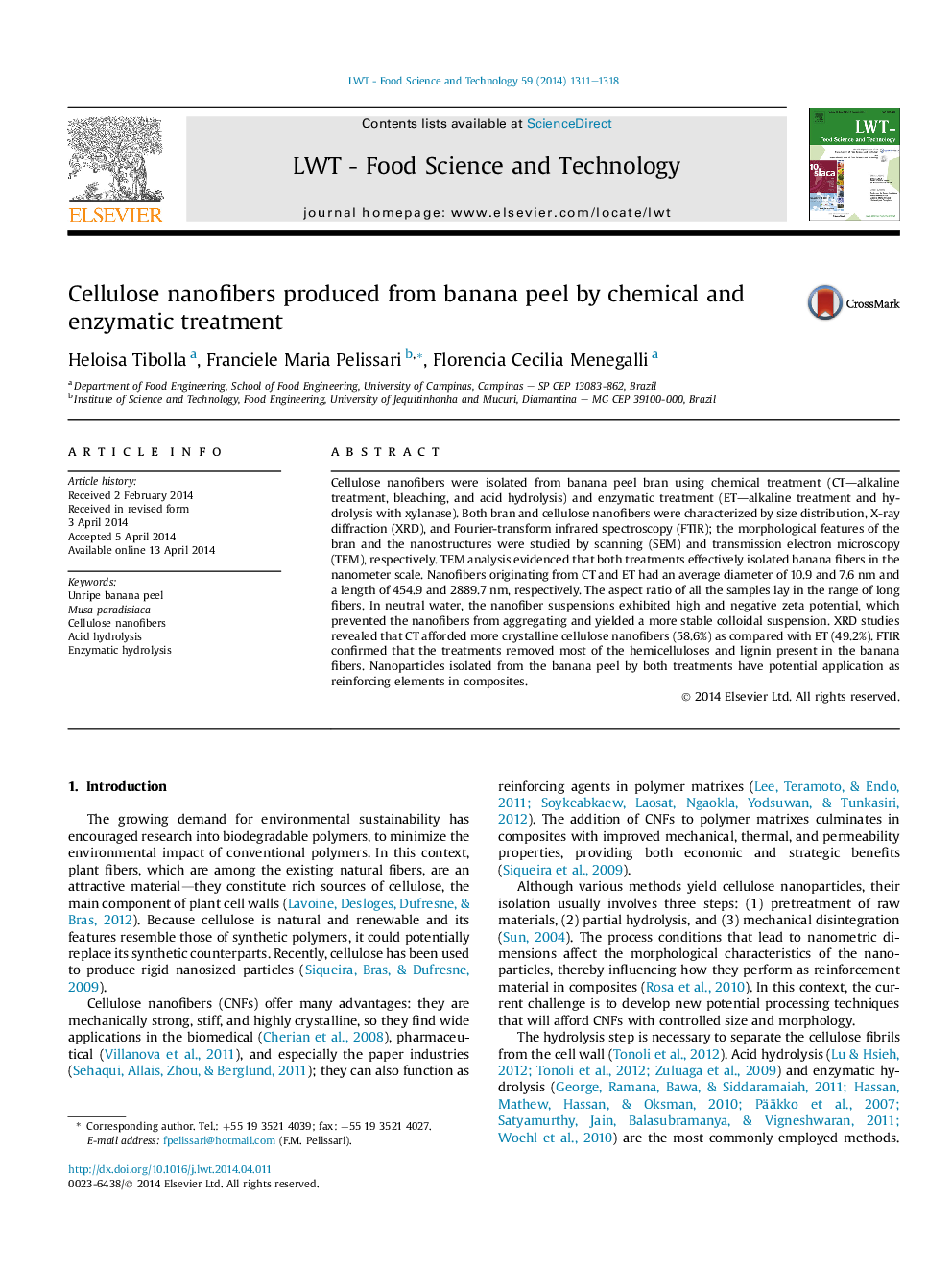| Article ID | Journal | Published Year | Pages | File Type |
|---|---|---|---|---|
| 6402770 | LWT - Food Science and Technology | 2014 | 8 Pages |
â¢The potential use of banana peel to produce cellulose nanofibers was investigated.â¢A study of nanofibers obtained by chemical and enzymatic treatment was conducted.â¢The chemical treatment removed the amorphous components more effectively.â¢The enzymatic treatment afforded a more stable cellulose nanofibers suspension.â¢Nanoparticles obtained by both treatments can be used as reinforcement in composites.
Cellulose nanofibers were isolated from banana peel bran using chemical treatment (CT-alkaline treatment, bleaching, and acid hydrolysis) and enzymatic treatment (ET-alkaline treatment and hydrolysis with xylanase). Both bran and cellulose nanofibers were characterized by size distribution, X-ray diffraction (XRD), and Fourier-transform infrared spectroscopy (FTIR); the morphological features of the bran and the nanostructures were studied by scanning (SEM) and transmission electron microscopy (TEM), respectively. TEM analysis evidenced that both treatments effectively isolated banana fibers in the nanometer scale. Nanofibers originating from CT and ET had an average diameter of 10.9 and 7.6Â nm and a length of 454.9 and 2889.7Â nm, respectively. The aspect ratio of all the samples lay in the range of long fibers. In neutral water, the nanofiber suspensions exhibited high and negative zeta potential, which prevented the nanofibers from aggregating and yielded a more stable colloidal suspension. XRD studies revealed that CT afforded more crystalline cellulose nanofibers (58.6%) as compared with ET (49.2%). FTIR confirmed that the treatments removed most of the hemicelluloses and lignin present in the banana fibers. Nanoparticles isolated from the banana peel by both treatments have potential application as reinforcing elements in composites.
